Real-Life Strategies for a Successful Low Buy Year: Navigating a Year of Minimal Shopping
A low buy year is a great way to gain control of your shopping habits by embracing a minimalist mindset about your wardrobe.

I used to be a super shopper, and I am excited today to give you a recap of my year-long low-buy process. To share some lessons I learned and how it truly changed my perspective on clothing, shopping, and everything about my image. Last week was my birthday and I turned 43 if anybody really wants to know.
My birthday marked the end of my official no-buy / low-buy year that I started on my birthday last year. I began this process because I’m running this business and helping people hone down their style and minimize their wardrobe. But I was still struggling with shopping a lot. Like a lot, a lot!
join the style membership for fashion frustrated women
The Radiant Woman Adventure
Understand your personal style, choose clothes that flatter your body, and look amazing every day. Get help with color analysis, style essence, body type, and building an easy simplified closet with a personal stylist in your pocket.
Table of Contents
Leading Up to My Low Buy Year
It was nothing for me to order three to five new things a week, even if I sent some of them back. I was struggling with this add-to-cart buy-now philosophy and mindset. The thing is, I knew it was a problem, and there was a friend that I was talking to at the time who was having similar struggles.
I feel like the Lord led me to a random book around this time. I honestly can’t remember what it’s called but it was about a woman from Australia who had gone on a year-long no-buying journey because she recognized that she had a problem with shopping. She documented it over time and published a book.
It was a really interesting read and it made me start seriously thinking about this concept of dedicating a full year to not buying things or at least consciously buying very little. I had heard of this before, but it had never really been an option or something I was interested in because I still had the mindset that I needed so much variety in my wardrobe.
I’d reached this point where I was done obsessing over shopping. My wardrobe would constantly go through these phases where it felt super overwhelming, and then I would purge a bunch of things and then I would shop again. It was this binge-purge cycle of clothes and shopping and I was done and I just needed a change.
I committed to this process and I did a little binge-shopping the week leading up to my birthday. Officially the challenge for me started the day after my birthday on September 21st. I sat down before I did this, and wrote a blog post about how to plan and implement a no-buy year.
I set some parameters and rules for myself because it was really important to make a plan. I had a plan going in and it’s interesting because I’m looking at it now and I had different exceptions. Things that I wanted to buy, some of them I bought, and one of them I bought and then sold.
Some of them I actually didn’t buy because it wasn’t something that was ever created or I just ended up deciding I didn’t need it. I had decided to choose a pair of sandals and I did buy a pair of sandals in the spring. Then I had things on my list about doing tailoring or alterations if I needed to.
I was actively losing weight when I started this process last year so I had a downsizing section for replacing items. I would purchase the same duplicate in a smaller size as long as I sold the original. I did end up losing a significant ton of weight. I had planned to only downsize if my clothes looked absolutely frumpy and dumpy, and I did get to that point and I did have to replace them.
Then I got pregnant. I waited until the end of the first trimester because I expected to gain weight again. I have not gained much weight during this pregnancy. At that point, my clothes were looking super frumpy and too big, and I was pregnant. I went ahead and started sizing down a bunch of things.
I allowed crafting but I put a limit that I couldn’t buy new beauty products except for replacements. I was going to keep track of things in the Stylebook app but I did not do that. Then I committed that when I wanted to shop I would either read a book, do a craft, write or blog, or declutter and purge something. Originally it was supposed to be a no-buy year except for these minor exceptions.
But about a week or two into it, I changed my mindset a little bit and transitioned to a low-buy year. I changed the parameters a little bit because I recognized that a lot of things were changing. To make this work for me I needed to make some adjustments because I was not ready for a full no-buy year.
Honestly, I am not sure I will ever be ready for a full no-buy year. God has a way of making us do things that we would thought we would never do, like a low buy year in the first place. The thing that I intentionally changed was adopting the five-piece wardrobe shopping mentality for a spring shopping list and a fall shopping list.
I’ve been sticking to that pretty well for the most part. I have not kept track of my purchases over the year. I did do a lot of downsizing, but I downsized one for one. I have so many fewer clothes now than I had before and my closet is infinitely smaller. I’m guessing that the decluttering and purging were happening at a more exponential rate than the things I was downsizing.
There were a few things I added in the spring, the maternity five-pieces I added, and then the stuff I’ve added here as we’re coming into fall again. Now, you have a little backstory into how my low buy ear was prompted, how it went a little bit for me, and how I changed a few things around and made it work for me for a long-term way of thinking.
I’d like to share four lessons that really came about as things that shifted for me as I was going through this process.
Low Buy Year Lesson 1: Shopping is an Addiction
The first one is that shopping is an addiction. It is a real addiction. I knew this going into the process, but the way it has changed for me in the last year has been incredible. I used to scroll and window shop and add to cart anytime I felt stressed out because shopping provides us with a dopamine hit. It gives us that, hormone high that you get from other types of addictive behaviors and addictive substances.
I was constantly seeking that because I felt overwhelmed. I was dealing with a lot of things that had not yet been addressed officially. This was in September. If you’ve listened to previous episodes, you know that I was diagnosed with PTSD in November. I was dealing with a lot of emotional problems and I was using shopping as a very unhealthy and expensive way to cope with my problems.
Obviously, there has been a lot of healing that has gone on in the last year because I could no longer use that crutch. I was forced to deal with some things that had been building up for a while. When I took that away, that ability to scroll, shop, and add to cart and get that dopamine hit it really allowed me to change and shift and become a better person.
Eventually, it got to the point where it wasn’t interesting to do those things anymore. I no longer look for the dopamine hit of shopping when I’m feeling bad because it doesn’t have the same power over me that it used to have. It doesn’t give me the same dopamine hit that it used to give me.
I also know that my shopping is planned and constrained to certain times of the year and that I get to have a lot of fun leading up to those times by planning, thinking, and really being sure that the items that I am going to buy are truly reflective of who I am right now.
Tired of feeling confused about your style? Follow my exact plan to simplify your closet with the Wardrobe Transformation Framework.
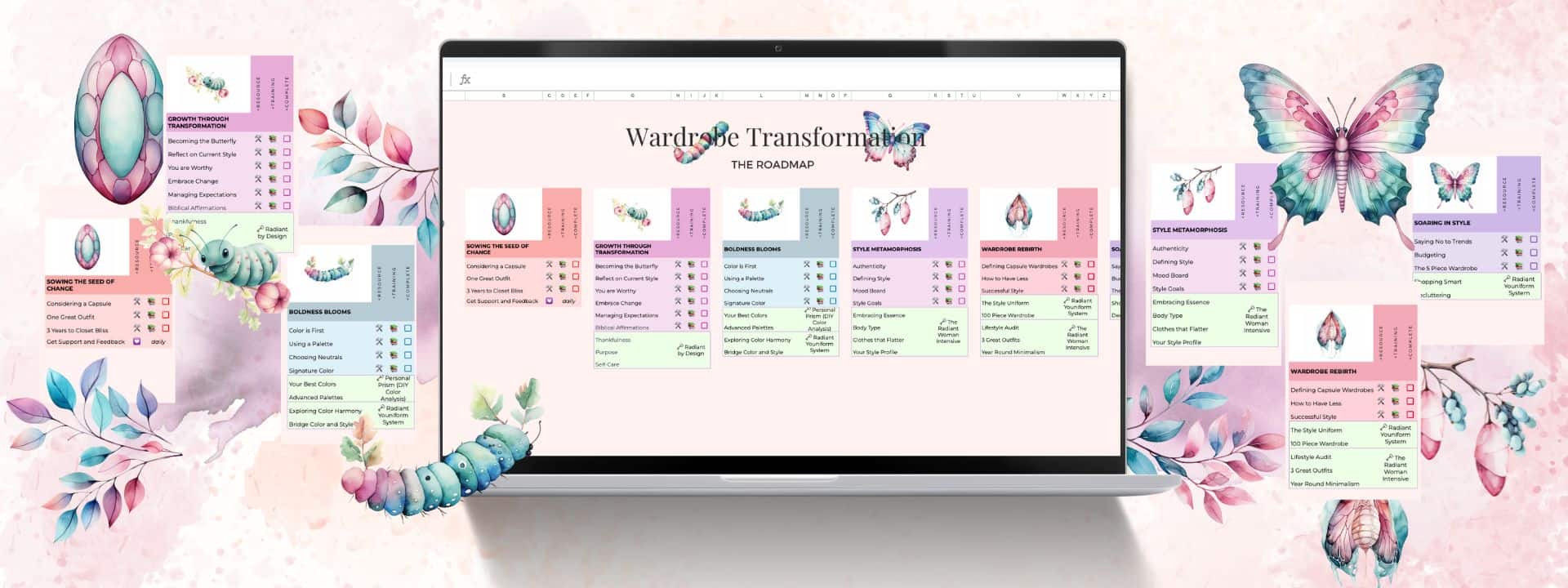
Low Buy Year Lesson 2: Perfection is Overrated
The second lesson I learned from this process is that perfection is overrated. I remember writing that initial blog post last year and having delusions of grandeur. Thinking that I was going to accomplish some magical feat, that is still probably outside of my ability range, by not buying anything and sticking to my rules perfectly, because that is not who I am.
I am somebody who likes to shift and adapt things on a whim. I like to go with the flow and I had to let go of the idea that it was going to be perfect. I want to be really honest and tell you that the five-piece wardrobe may have actually been a seven-piece wardrobe. I wasn’t perfect, but I did stop shopping in between those periods other than maternity items.
Other than very specific downsizing, which to be honest sometimes felt like I was still shopping, I wasn’t shopping for anything new. I was simply replacing something in my wardrobe with something exactly the same. It’s one thing to commit to a process like this and it’s good and healthy and wonderful, but don’t beat yourself up when things don’t go as planned.
Don’t quit when you aren’t perfectly the person that you thought you were going to be, just keep going. Keep moving forward, keep waking up every day, and committing to this process if you want to do this. Tell yourself that today is another low-buy day. Today is not a day where I’m going to hop online, start scrolling, add a bunch of things to cart, buy them, and have them sent to my house.
That is not what we’re doing today even if yesterday I ordered something I didn’t plan to. Today doesn’t mean I get to do it again, it’s a day to start fresh, to start new, and to let go of the idea that your low buy or no by year needs to be perfect. It just needs to be making you better. I talk about this with both my kids all the time. They used to love to try to tell me practice makes perfect.
But I have started to really instill in them the phrase that practice makes better. That is true here as well because unless you are Jesus, and I know you’re not, you’re not perfect. Neither am I. Letting go of this concept of perfection in everything that we do, but especially in the realm of changing our mindset about shopping and style and how we look, is overrated. Just keep trying, keep showing up and know that every day you’re getting a little bit better.
Low Buy Year Lesson 3: Boundaries Create Freedom
Now that I’ve gone on and on about perfection, I have something else to say. Which is that boundaries create freedom. I don’t know if you’ve ever read the book Boundaries, about relationships and boundaries. I’ve read it once or twice, but nothing ever seems to fully stick with me.
Boundaries are really important and they are biblical. Dr. Cloud talks about this in the book, how God creates boundaries to protect us and to limit us. I found that in this area of a low buy year, it was the exact same for me. I did create the rules and I did modify them because, like I just said a minute ago, perfection’s a bit overrated, but I still needed boundaries. I still kept the boundaries, like the five-piece wardrobe.
As I’ve admitted, I’m pretty sure my spring five-piece was more of a seven-piece wardrobe, but it wasn’t me buying clothes for months and months and months continually shopping. It was a very planned and specific event, where I spent maybe a month or so planning the list, and then I spent a few weeks curating and collecting the things on the list.
Some of them I sent back because they weren’t what I wanted when I ended up getting them. Having these boundaries and rules, especially in the very beginning, of not going online when I felt the urge to shop, were really impactful. One of my rules was that I would do something else if I felt the urge to shop like going to read a book.
I don’t need them so much now because so much of my mindset has shifted in this way, but in the beginning, I definitely needed them. Always remember that when you’re taking on a challenge of any kind, or when you’re starting something new, create some rules for yourself. Create some boundaries because they will help keep you within the framework that you want to continue.
They will give you parameters that help you stay true to what you want to accomplish. Also, share your challenge with other people. Tell other people what you’re doing, because those boundaries of other people knowing what you’re doing, that accountability, will definitely help you stick to it, keep going, and be successful in the end.
Low Buy Year Lesson 4: 80/20 Rule Minimalism
The fourth lesson I want to share with you is the 80/20 rule when it comes to minimalism. For years have chased this concept of a perfect capsule wardrobe or being a minimalist in my wardrobe. What I’ve realized is that minimalism really looks so different for everyone. I still aspire to be a perfect minimalist, but I have six and a half children so I don’t think I’m a minimalist at heart all the way. I obviously have a love of excessive things, whether it’s clothes or shoes or children or head scarves!
The one thing that really stood out to me here was that in 80% of my wardrobe I can be a minimalist. I can have and own less. I can curate it, collect it, and make it simple. There are going to be 20% where I’m not a minimalist and I’m probably not ever going to be a minimalist. Being free in those areas, like shoes and headscarves, really helps me embrace minimalism in the other 80%.
I’m okay having a handful of dresses that are the core of my wardrobe. Less than 20 dresses are the complete core of my entire year-round wardrobe. Same with my cardigans. I think I have five or six at this point that are literally the basis of my year-round wardrobe. If I had to break it down for you, I would say it’s less than 20 dresses, five or six cardigans, three or four spring-summer tops to layer over dresses, and I have three or four fall-winter tops to layer over dresses.
Then I have three or four pairs of leggings for layering. This is under 50 items in my closet that I wear on a regular basis. This is what my core wardrobe looks like. I probably have 20+ pairs of shoes and I don’t even want to count the headscarves because they’re probably about the same. You can see that my wardrobe is 50% clothing and 50% accessories, but it’s what works for me.
This is the point that I want to make to you, is that it’s easy to look around and see how other people are defining minimalism or a capsule wardrobe or what it should look like for you. It was always really difficult for me to look at those and think I could only have four pairs of shoes because that wasn’t me. It’s not ever going to be me.
I have been a shoe fiend for the last 20 years and I don’t think that’s going to change. Be authentic, be true to yourself, and recognize that the limits may not work for you in every area of your closet. You may have to break the rules a little bit and give yourself that grace. Give yourself that 20% where being a minimalist is not your jam.
Final Thoughts on a Low Buy Year
To be honest, this process completely changed who I am, how I approach shopping, how I look, how I feel, and how I show up. It changed the confidence I have in who I am as a person. Of course, because in my business I talk about these things, it’s changed my business as well.
It’s changed how I see things when I work with other women. It’s had a lot of profound changes but the big thing is that it changed me. It wasn’t the low buy that changed me. It was getting out of my own way and making this space for God to change me when I was too busy trying to fill it with the dopamine hit of shopping.
I’m saying this today because I know so clearly that many of you reading right now have the same struggle with shopping. I know it because some of you are in my community and I see you talk about it. I see you talk about minimalism and capsule wardrobes, and then I see that you go shopping and buy a bunch of stuff.
I want to be really clear today, and really honest with what this process has looked like for me. That it wasn’t perfect, that I did not stick to buying nothing all year long like I originally thought I was going to. I made exceptions and I changed them and I modified them. The commitment itself to not shopping allowed God to change me.
If you’re struggling with this, if this is an area for you where you want to get better and you want to stop shopping all the time, but you feel really stuck, then I would encourage you to just pray on it. Hit your knees and pray on it because God doesn’t want this for you. He doesn’t want you to be stuck in this seeking cycle.
Whatever it is that you’re seeking from your shopping habits, whether it’s escaping from things you don’t want to deal with like I was, or just feeling down, and wanting to feel uplifted. Whether you truly don’t like what you see in the mirror and you’re seeking some solution, any solution to fix that problem. Shopping is not going to be your answer. Looking inside yourself, and letting God do the work on you, are the answers.
For me, this has changed me in so many ways. My marriage improved, and I started head covering because God asked me to. That changed my confidence level. It increased because I am who God says I am, and that’s really all there is to it. I’m here doing what he’s asked me to do and being faithful. That’s really all we can do, really at the end of the day, is to follow him and do what he says.
For me, moving forward, I love not shopping all the time. It saves me money, time, and emotional rollercoasters of buying and sending back and wasting time on things. My intention at this point moving forward is to continue with the five-piece wardrobe method twice a year. Maybe it’s a seven-piece wardrobe method for me, I don’t know.
If I need to change sizes I will do that because I’m not willing to feel terrible in my clothes, just for the sake of a no-buy. I hope this has been an interesting read for you today. I hope that if you are feeling overwhelmed by your clothing, feeling overwhelmed by your shopping habits, there is some wisdom in here for you.
If you are contemplating a low buy or no buy year, I hope there was some relevant information in here about making it work for you. But ultimately, at the end of the day, it is not about being perfect. It’s about becoming a better steward, a better person, and a better follower of Christ.
Related Wardrobe Management Articles:

You can overcome a shopping addiction by embracing a minimalist mindset during a low buy year.
Stacey is the owner and creator behind Radiantly Dressed. She is a certified image consultant and AICI member focusing on creating simplicity in wardrobes via color and style.
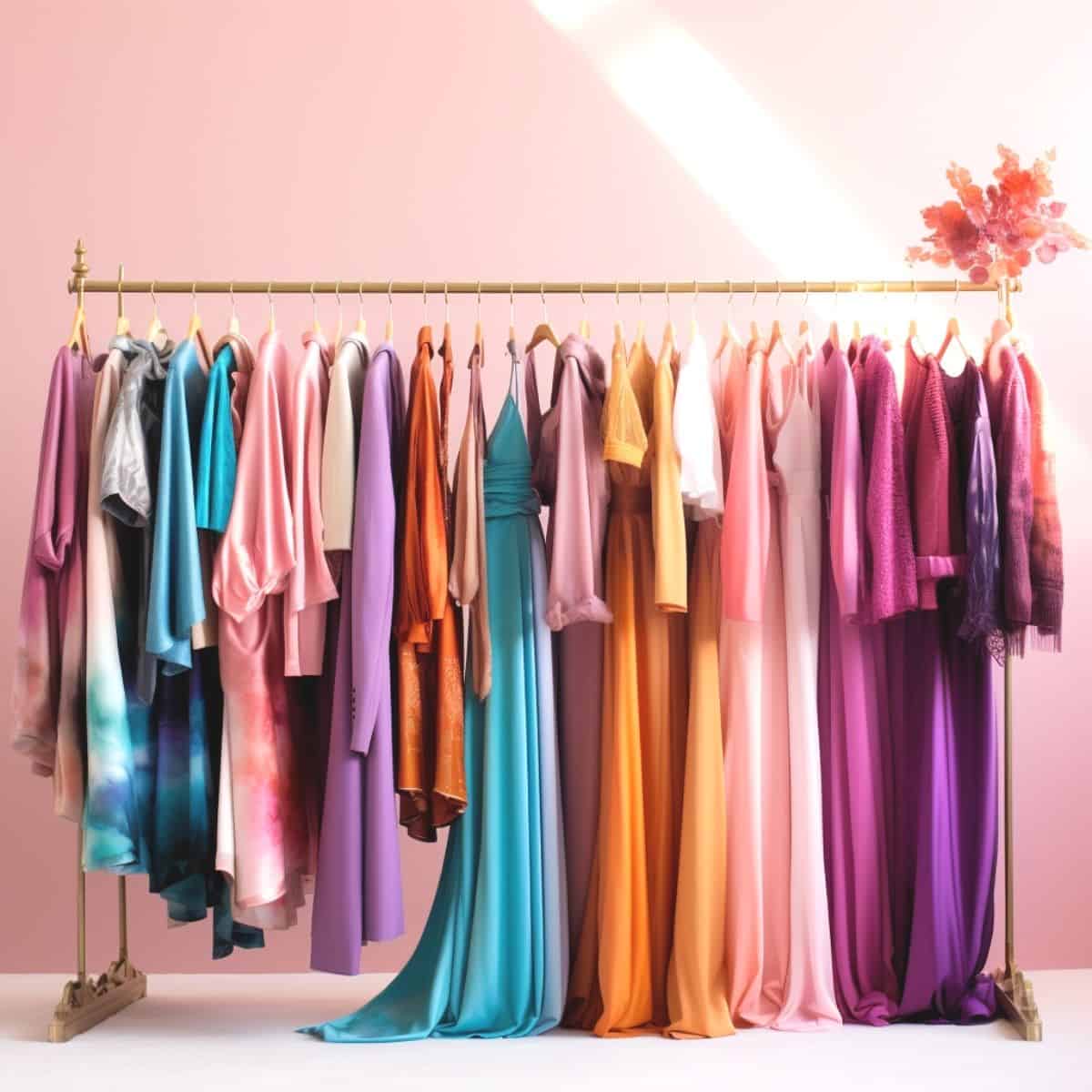
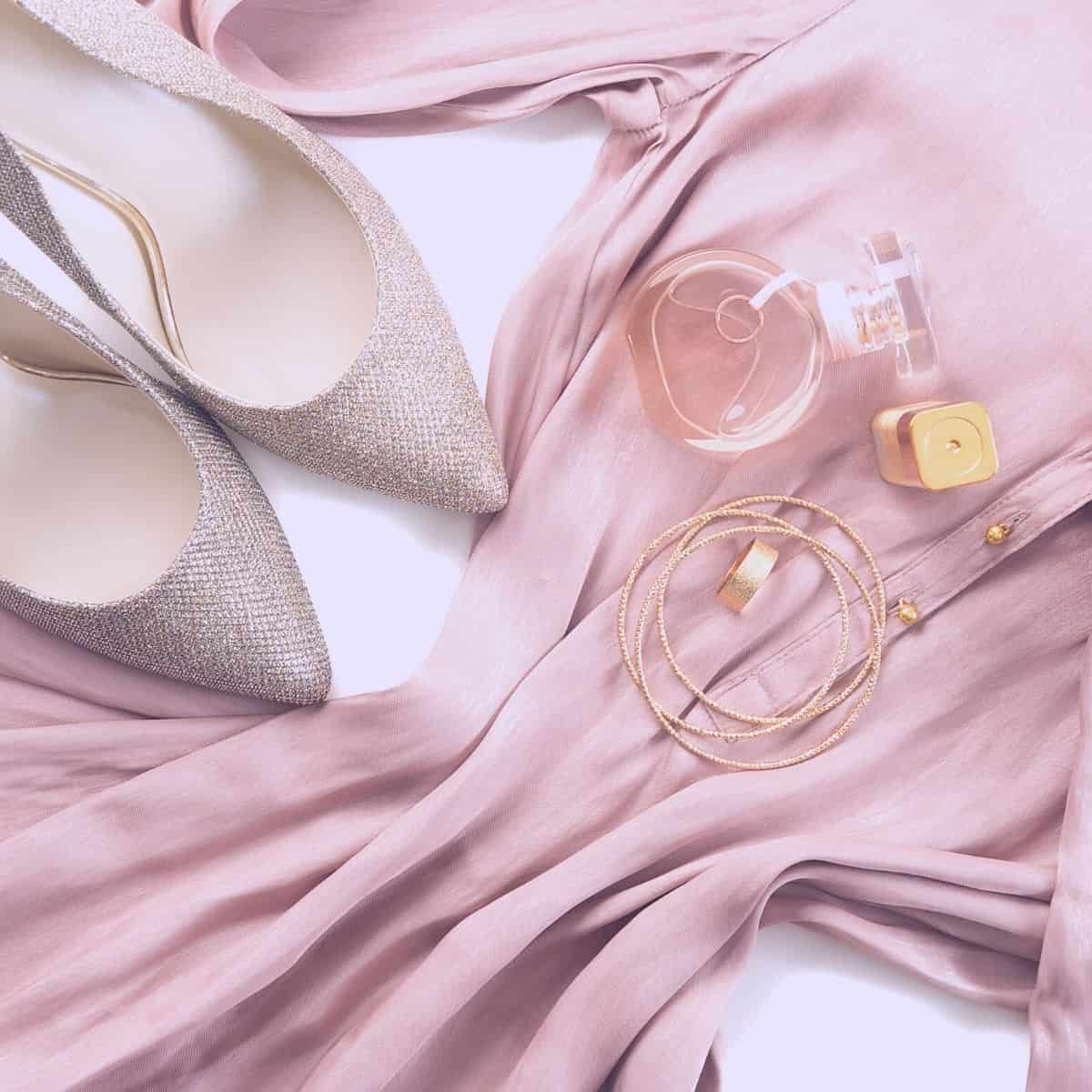
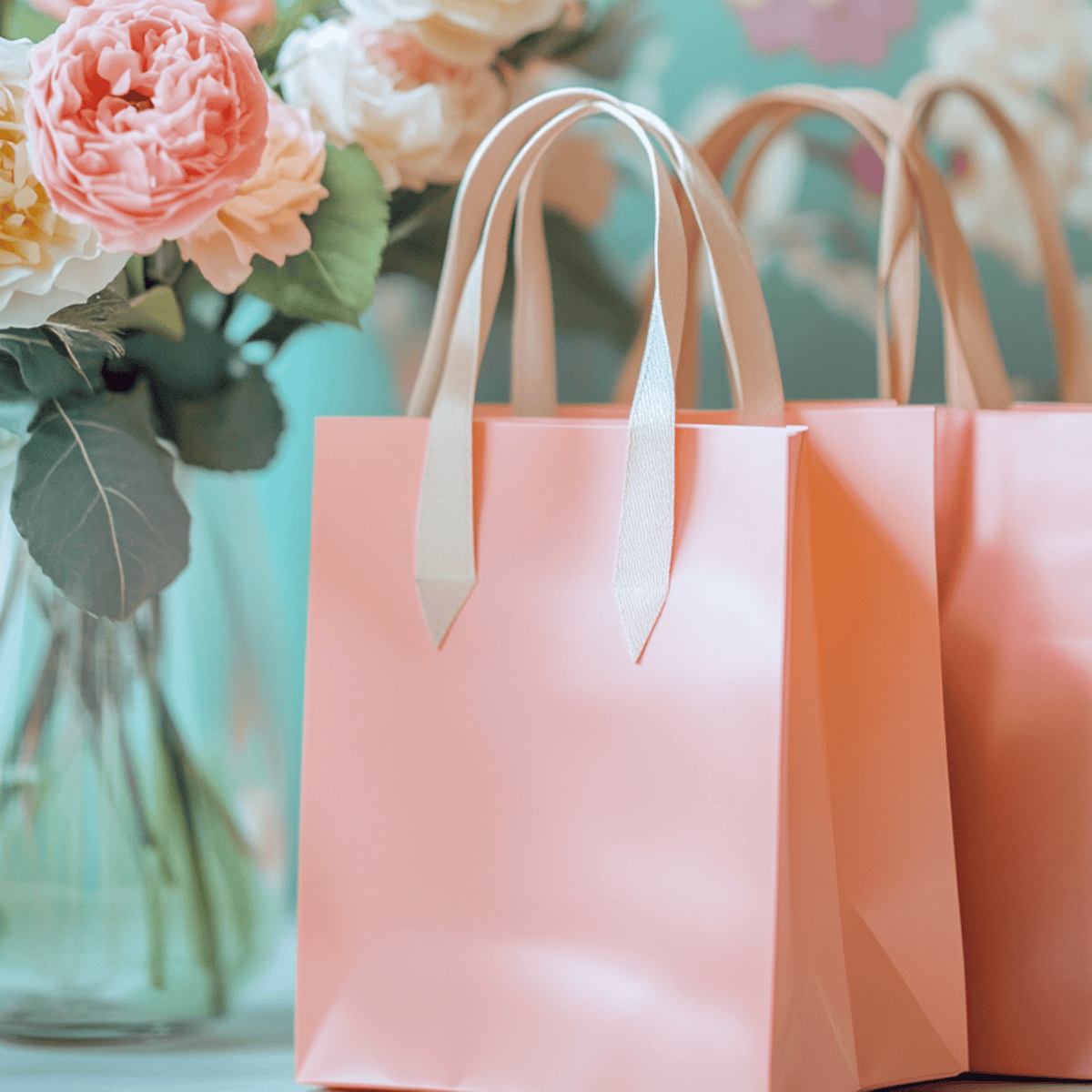

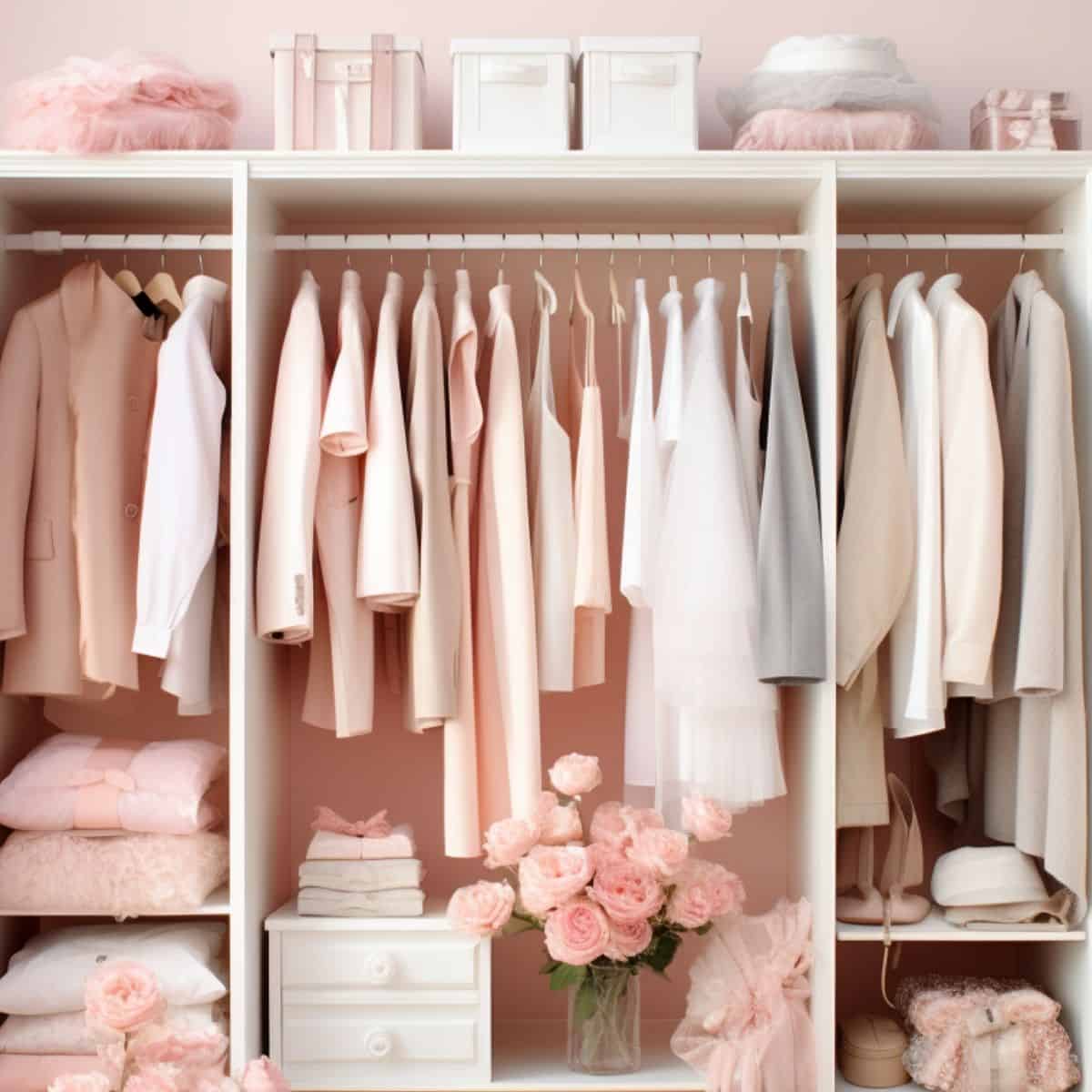
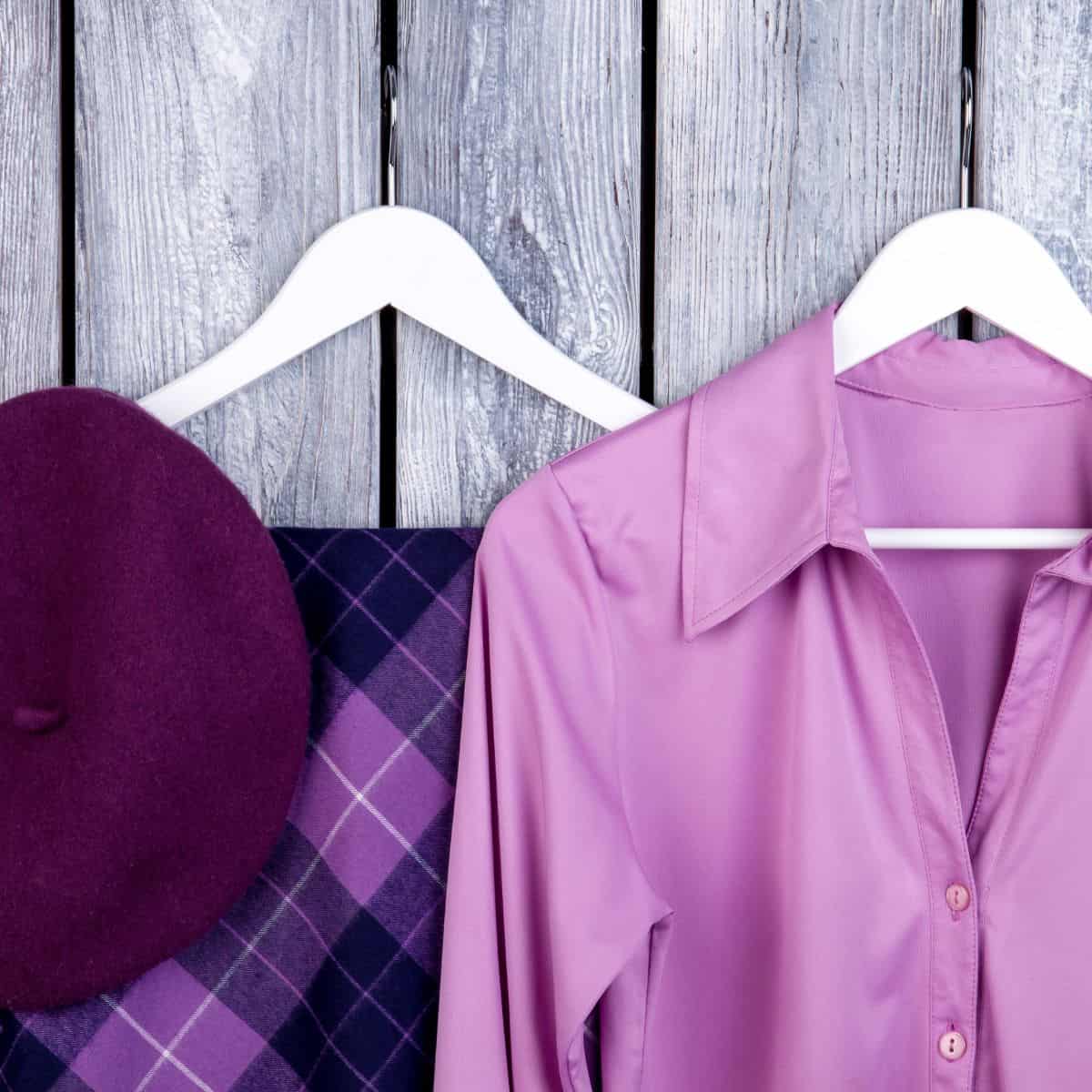

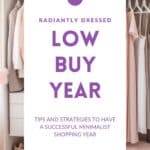



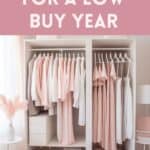




Such a great approach to mindful shopping!